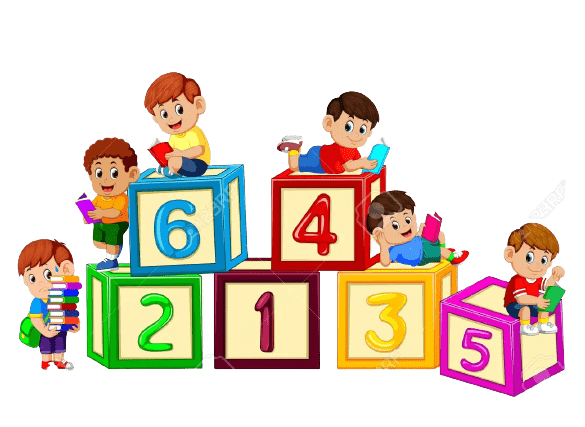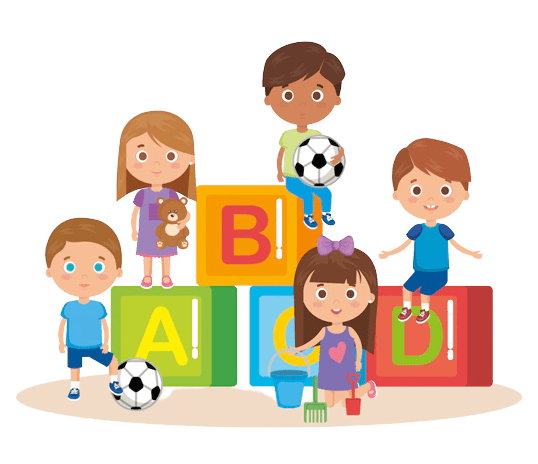Kindergarten Curriculum Overview
Kindergarten Curriculum Overview


The SEVEN Areas of Learning in Kindergarten at DIPS-G
Communication and Language:
Communication and language consist of Listening and Attention and Understanding and Speaking.
0-11 Months: For an infant, communication and language is all about turning towards a familiar sound and then locating the sounds with accuracy.
16-26 Months: Children’s understanding is about identifying objects within a
group.
22-36 Months: Children begin constructing simple sentences.
30-50 Months: Children begin to connect ideas from past and present.
Literacy:
Literacy is linked with speech and language writing skills. To promote literacy in the early years of your child’s holistic development, encourage your child to look at books and handle books with respect as it provides knowledge.
0-11 Months: An infant will begin to feel the textures and will look at different pictures and images.
16-26 Months: Children will begin to show interested in songs and rhymes and may have his/her favorites.
22-36 Months: Children will begin to fill in the missing words of songs, rhymes, and stories.
30-50 Months: Children will begin to structure a story line based on their imagination skills and favorite characters.
Writing skills develop when your child has developed his/her fine motor skills. For example, they may begin to hold a pencil, marker, or a paintbrush using a tripod grip. Encourage your child to scribble and make different patterns or marks that they see in a different place or from a book.
Mathematics:
Mathematics can be taught through plan and hands-on practical skills. Through play-based activities, your child will be able to understand concepts of numbers, shape, space, and measurement.
0-11 Months: An infant will enjoy crawling and rolling over on a big shape floor puzzle.
16-26 Months: Children will begin to explore sand pit areas by filling and emptying containers.
22-36 Months: Children will be able to use the language of size (small, medium, big).
30-50 Months: Children will be able to count and match numbers in a set.

Understanding the World:
Mathematics can be taught through plan and hands-on practical skills. Through play-based activities, your child will be able to understand concepts of numbers, shape, space, and measurement.
0-11 Months: An infant will enjoy crawling and rolling over on a big shape floor puzzle.
16-26 Months: Children will begin to explore sand pit areas by filling and emptying containers.
22-36 Months: Children will be able to use the language of size (small, medium, big).
30-50 Months: Children will be able to count and match numbers in a set.
Physical Development:
Physical Development is about moving and handling, health and self-care, self- confidence, and self-awareness. Promote “I can do it by myself”, encourage your child to eat their snacks independently, tidy up the table after mealtimes, and wear shoes and socks independently.
0-11 Months: For an infant, physical development is about making movements with arms and legs and learning to gain control over their body movements.
16-26 Months: Children will begin expressing likes and dislikes by trying different food textures.
22-36 Months: Children begin to express their own preferences and interests. 30-50 Months: Children begin to dress on their own without any support being
offered to him/her and to understand how to handle equipment in a safe manner.
Expressive Arts and Design:
Expressive Arts and Design extends your child’s creativity, curiosity, exploration, and play. Expressive Arts and Design involves exploring media and materials and being imaginative.
0-11 Months: An infant will develop this area of learning through sensory motor skills.
16-26 Months: Children will develop in this area through music by using their whole body and gestures.
22-36 Months: Children will begin to experiment mixing colors and create different sounds, such as a high and low pitch sound using various materials and objects.
30-50 Months: Children will engage in pretend play and build stories around objects and small world toys.

Continuous Provision and Enhanced Provision
1. Continuous Provision
Importance of Continuous Provision
As teachers, it is essential to fully understand both what continuous provision is and how it helps support children’s development. Crucially, effective continuous provision should provide children with the opportunity to demonstrate the characteristics of effective teaching and learning. For example, in the construction area, children may independently investigate how high they can build a tower by using wooden blocks. Trying to arrange the blocks in different ways or testing if they can add any other construction materials to their tower to make it sturdier, demonstrates aspects of both playing and exploring.
Continuous provision also enables children to return to their explorations and consolidate their learning over the course of a day or a more extended period. When children do this, they can explore what happens to things as they change over time and make changes to explore new ideas. Continuous provision also allows children to make choices and initiate play without interaction with an adult.

What Effective Continuous Provision Looks Like
Continuous provision transcends all areas of learning. When preparing resources for continuous provision, we do the following:
- Make sure that each area set up for continuous provision has the necessary resources to encourage children to play and explore in a variety of ways.
- Offer a range of high-quality resources that will act as a good starting point for the children’s explorations.
- Use open-ended questioning to engage the children in conversations and prompt their creative thinking.
- Give children time to revisit what they did yesterday, last week, or even a few weeks ago.
Teachers’ Role in Continuous Provision
2. Enhanced Provision
Importance of Enhanced Provision
What Effective Enhanced Provision Looks Like
- By building on the observations that they have made while watching students play creatively in their continuous provision areas, special themes and activities can be supplied to children as part of enhanced provision.
- It is a great way for teachers to use the classroom to their advantage to strengthen and bolster their children’s independent learning techniques and help students to broaden their horizons.
- By using enhanced provision, children will continue on their journey along the learning continuum and begin to gain some of the attributes that will see them progress through the areas of learning.
Some of the key benefits that enhanced provision are:
- By building on the observations that they have made while watching students play creatively in their continuous provision areas, special themes and activities can be supplied to children as part of enhanced provision.
- It is a great way for teachers to use the classroom to their advantage to strengthen and bolster their children’s independent learning techniques and help students to broaden their horizons.
- By using enhanced provision, children will continue on their journey along the learning continuum and begin to gain some of the attributes that will see them progress through the areas of learning.
Some of the key benefits that enhanced provision are:
- The chance to consolidate the learning made in continuous provision areas.
- Versatility and adaptability for practitioners/teachers to cater certain tasks according to interest.
- The ability to differentiate tasks based on the abilities of a certain child.
- Greater opportunity to introduce new ideas to students without them having to be formally taught.
- A fantastic way for children to take risks and experiment independently with no fear of negative feedback.
- A great way for children to re-visit some of their learning skills.
Teachers’ Role in Enhanced Provision
- Malleable play
- Wet/dry sand
- Dance/performance area
- Painting/art area



